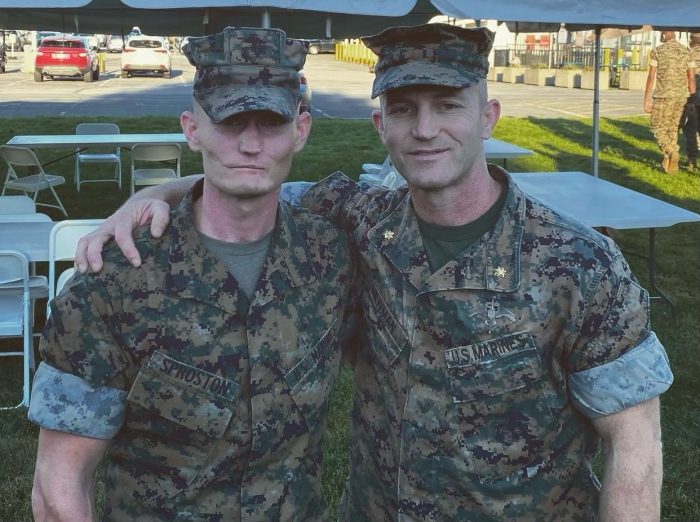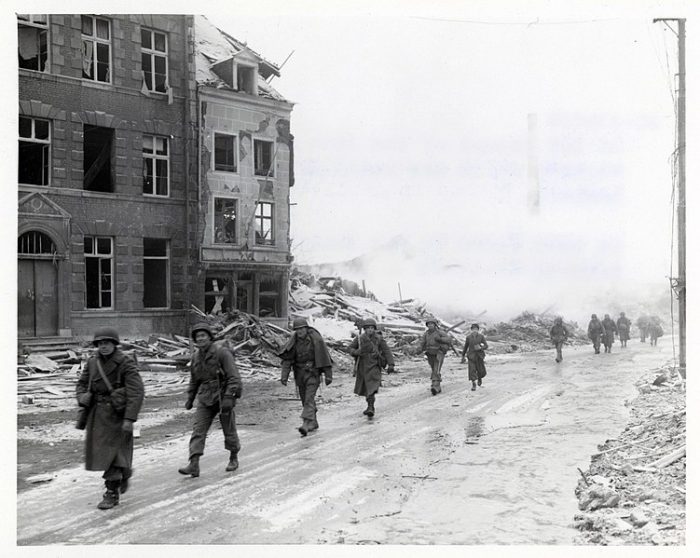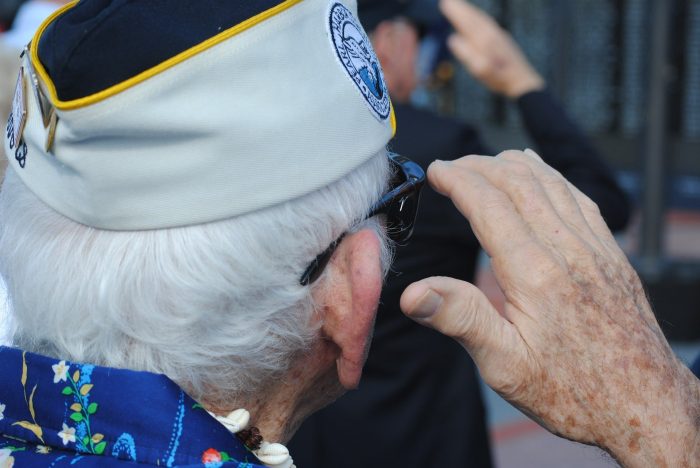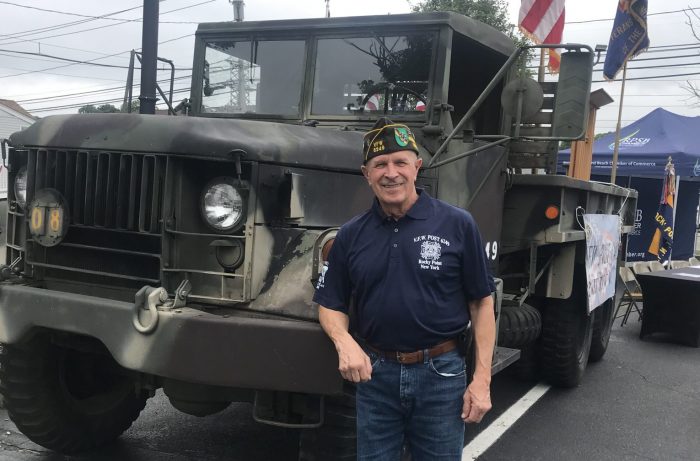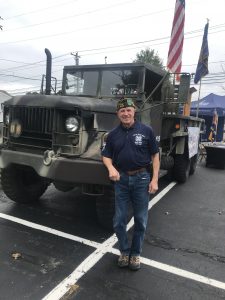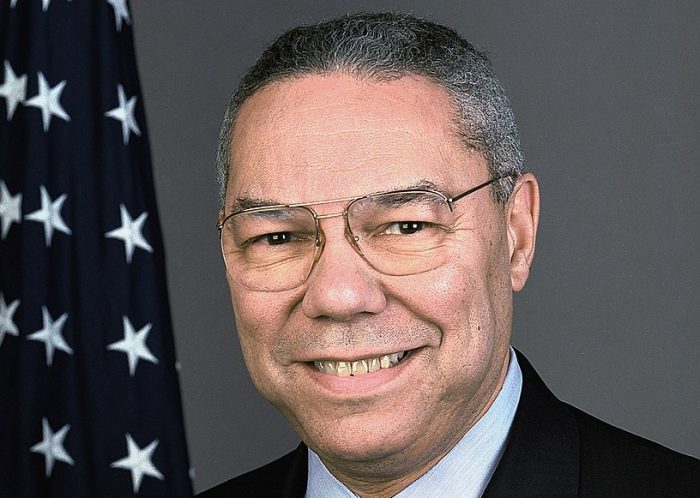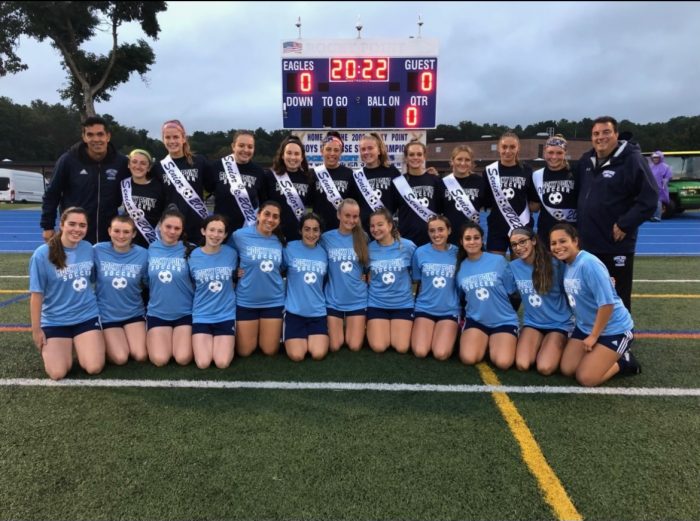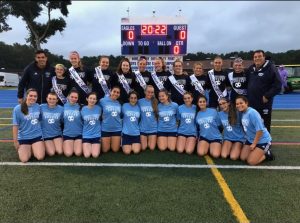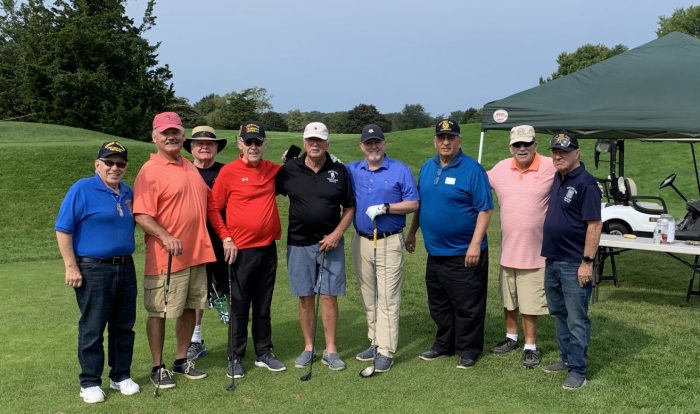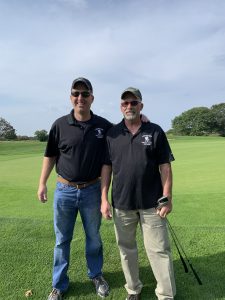“If you’re willing to put yourself and your dreams on the line, at the very least you’ll discover an inner strength you may have not known existed.” — Kurt Warner, Super Bowl quarterback and Hall of Famer
These words from this noted athlete who lived through a life of adversity, also identify the strength, character, humanity and resiliency of Baiting Hollow resident Robert “Rob” Sproston.
On March 31, 2020, Riverhead police officer Sproston was responding to a domestic incident of a young woman who was assaulted by her boyfriend with a knife. Her car was then stolen by the man.
On his way to the Baiting Hollow Country Club, Sproston was picking up lunch for the officers working on Main Street within the heart of Riverhead. As he was heading north on Osborn Avenue, not too far from Youngs Avenue, he heard the call of this developing incident, where the stolen car was heading westward toward his direction.
As the officer was trying to figure out the situation from the information that was being reported on his radio and preparing to be in pursuit of the subject, his life would forever be changed. Driving at a high speed with his sirens blasting and lights flashing, Sproston was trying to do his job in handling this delicate situation.
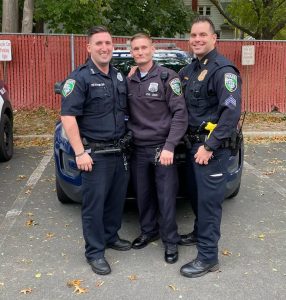
As he headed up Osborn Avenue, another driver made a left onto Youngs Avenue, and he tried to move his police vehicle around the car.
Making the left, the driver drove directly into Sproston’s car, and the officer crashed into a chain-link fence. A pole shot through his windshield, hitting him through his face. Horribly injured in his car, the officer was near death before the first responders made it to the scene.
The life that Sproston led before the crash helped him prepare for this life-altering moment. As a young man, this “all-American kid” was always armed with a big smile and a can-do attitude. He was an active member of the Rocky Point Fire Department, played several years of varsity lacrosse on the Rocky Point High School team, and is a proud alumnus of the Class of 2010.
During his youthful years, Sproston enjoyed riding his quad with his friends within the powerlines behind the McDonald’s in Rocky Point. And he understood the practice of hard work through the intricacies of installing residential roofs with his father Billy.
In 2014, Rob Sproston began his career path by entering the Suffolk County Police Academy at the Grant Campus of Suffolk Community College in Brentwood. After graduation, he was hired as a part-time police officer for the Town of Riverhead.
Right away, he learned about the makeup of the community and believed that it was a good experience toward his professional growth within the field of law enforcement. While Sproston was not yet a full-time officer, he was thankful to gain this experience to work with the police, and to learn about the various challenges of this difficult job.
In 2016, with the prospect of being a full-time officer, he always wanted to serve this country and entered the United States Marine Corps.
As a 22-year-old, he was an older recruit who understood the importance of getting through the difficulties of military training for each day. Always a positive figure, he worked well with the other recruits to make it through their daily routines at Parris Island, South Carolina.
Sproston always believed that if you did not “embrace the suck,” that it would be difficult to make it through the hardships of training and the discipline of the Marines.
After he completed this training, Sproston was sent to Camp Geiger, North Carolina, where he learned how to become proficient within infantry training, weapons and tactics. Currently, he is with the Marine Corps Forces Reserve in Garden City, where he serves in an infantry sniper platoon, spends time in the field and enjoys the camaraderie of being in the military.
While he is proud of his time in the Marines, Sproston is glad to be serving closer to home, to be near his job, friends and family.
Before joining the service, he took the police exam to gain a permanent full-time position within a Suffolk County law enforcement department. He was eventually placed on a lottery and picked by the Riverhead Police Department in 2017.
Always willing to serve his nation and community, he was extremely pleased to be in uniform through the police and military. As a regular officer, Sproston patrolled the busy traffic and commercial areas of Route 58. This assignment offered him the chance to gain important knowledge of the local citizens, and the types of crimes that are common within this part of Riverhead.
And so on the day of the crash in March 2020, this police officer was near death, and right away the local fire department was dispatched to respond and provide aid. Service runs deep through the Sproston family, as his father Billy was one of the local fire and emergency support that arrived on this call.
At this point, his father did not know that his son was the officer in the wrecked vehicle as he approached this scene. Senior fire officials tried to keep his father away as they prepared to move him to Peconic Bay Medical Center in Riverhead.
Rob Sproston’s face was practically ripped apart from the crash and he lost two pints of blood. He was stabilized at Peconic Bay and was airlifted to Stony Brook University Hospital, where he received major surgery and treatment toward the reconstruction of his face. For two weeks, he was in an induced coma. His father was at his side during this entire ordeal.
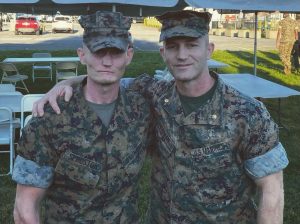
Speaking about these harrowing events, the son was completely reserved as he identified this near-death incident and his amazing recovery.
This young man still has minor nose-and-mouth surgery ahead, but his iron spirit completely demonstrates his unyielding resolve to continue a normal life.
Always an active citizen to help his community through the police and to defend our nation within the Marine Corps, Sproston has overcome several obstacles to return to duty. His professional and personal goal was achieved on July 1, 2021, when he was cleared by the police department to return to limited duty. He is looking forward to getting back into a sector car to be in the field.
Outside of the police, Sproston has resumed his life by working out in the gym and being cleared by a Navy doctor to return back to his infantry platoon. He is looking forward to the challenge of attending sniper school and being around his fellow Marines — always flashing a big smile.
Longtime Rocky Point High School social studies teacher and coach, Christopher Nentwich, said it best about Sproston’s positive qualities: “He was an ‘old-school’ student who was loyal, dedicated, hardworking and with a great sense of humor. I recommended Rob to several members of the police department and believed that he would be an outstanding addition to serve and protect the community of Riverhead.”
Rich Acritelli is a history teacher at Rocky Point High School and adjunct professor at Suffolk County Community College.

